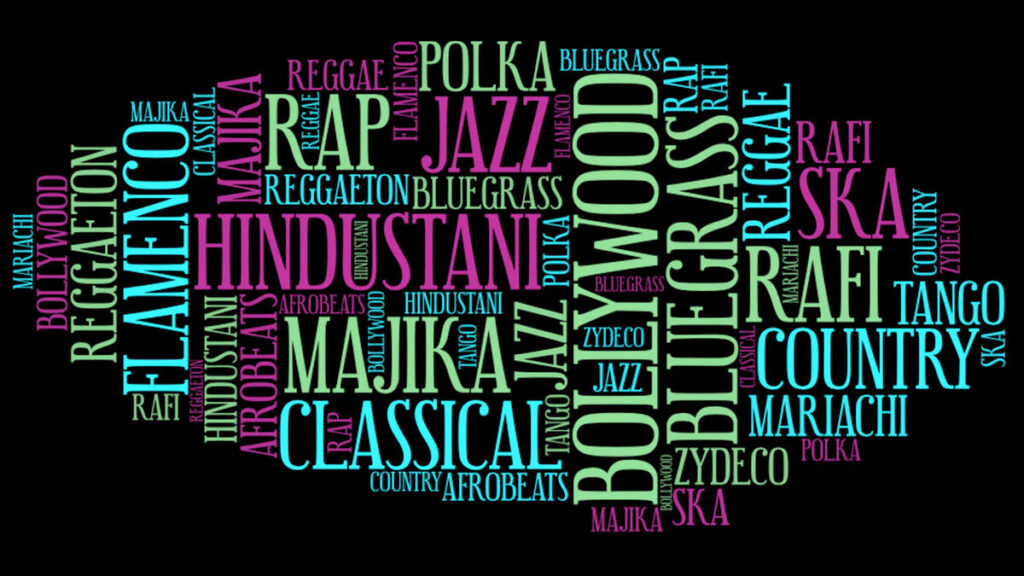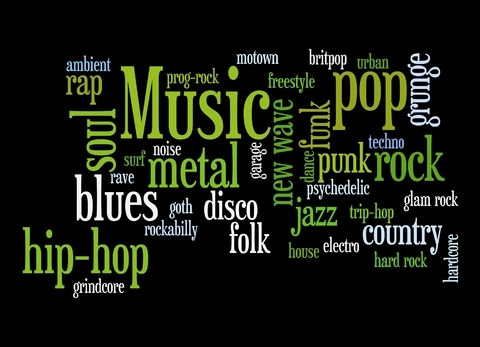In this article, “How Many Genres of Music Are There?” by Emily Hughes, the author explores the world of music genres and sub-genres. She highlights that there are approximately 41 primary genres recognized, with over 1200 recognized sub-genres. However, these classifications are not fixed and are constantly evolving over time. With the rise of music streaming platforms, categorizing music has become increasingly important, although the accuracy of these categorizations can vary. The article also delves into some well-known primary genres and their sub-genres, emphasizing that the number of sub-genres is constantly growing. Ultimately, the author reminds readers that while genres can be useful for organizing and describing music, they do not capture the full complexity and diversity of musical expression.

Primary Genres of Music
When it comes to music, there is an endless variety of genres to choose from. Each genre has its unique sound, history, and cultural significance. Here are some of the primary genres of music that have captivated audiences for decades:
Pop
Pop music is known for its catchy melodies, easy-to-sing-along lyrics, and upbeat rhythms. It typically features a combination of electronic instruments and live instruments, creating a polished and commercial sound.
Hip-hop
Hip-hop, also known as rap music, emerged from African-American and Latino communities in the 1970s. It is characterized by rhyming verses, rhythmic beats, and clever wordplay. Hip-hop has become a global phenomenon, influencing music, fashion, and culture around the world.
Rock
Rock music originated in the United States in the 1950s and quickly gained popularity with its energetic sound and rebellious spirit. It is characterized by electric guitars, drums, and powerful vocals. Rock has many sub-genres, including alternative, punk, grunge, and metal.
Rhythm and Blues
Rhythm and Blues, or R&B, is a genre that combines elements of jazz, gospel, and blues music. It emerged in African-American communities in the 1940s and has since evolved into a sophisticated and soulful genre known for its smooth vocals and heartfelt lyrics.
Soul
Soul music is closely related to R&B and emerged in the 1950s and 1960s. It is characterized by its emotional and passionate performances, often featuring gospel-inspired vocals and a strong rhythm section. Soul music has had a profound impact on popular music and continues to influence artists today.
Reggae
Reggae music originated in Jamaica in the late 1960s and is known for its laid-back rhythms and socially conscious lyrics. It became internationally popular thanks to artists like Bob Marley and has influenced many genres, including pop, rock, and hip-hop.
Country
Country music has its roots in American folk music and has a distinct sound that often tells stories of love, loss, and life in rural America. It features acoustic and electric guitars, fiddles, and heartfelt vocals. Country music has many sub-genres, including bluegrass and honky-tonk.
Funk
Funk emerged in the 1960s and 1970s as a rhythmic and dance-oriented genre. It is characterized by its syncopated basslines, brass instruments, and soulful vocals. Funk music has had a significant impact on other genres, including hip-hop and electronic music.
Folk
Folk music has a rich history and is often associated with storytelling and cultural heritage. It features acoustic instruments, simple melodies, and lyrics that reflect social and political issues. Folk music can be found in many cultures around the world.
Middle Eastern music
Middle Eastern music encompasses a wide range of styles and traditions from countries such as Egypt, Turkey, and Lebanon. It is characterized by exotic scales, complex rhythms, and rich instrumentation, including instruments like the oud and the darbuka.
Jazz
Jazz originated in African-American communities in the late 19th and early 20th centuries and is known for its improvisation, swing rhythms, and complex harmonies. It has influenced many other genres and continues to evolve and push musical boundaries.
Disco
Disco music emerged in the 1970s as a dance-oriented genre with a pulsating beat and catchy melodies. It became popular in clubs and influenced fashion and dance trends of the time. Disco had a significant impact on pop music and continues to be celebrated today.
Classical
Classical music refers to music composed from the 11th to the 21st centuries in the Western art music tradition. It is known for its complexity, structure, and orchestration. Classical music has many sub-genres, including symphony, opera, and chamber music.
Electronic
Electronic music is a broad genre that encompasses a wide range of styles and sounds created using electronic instruments and technology. It emerged in the 20th century and has influenced many other genres, including pop, hip-hop, and rock. Electronic music has sub-genres like techno, house, trance, and dubstep.
Latin American
Latin American music encompasses a diverse range of styles and rhythms from countries such as Brazil, Cuba, and Argentina. It is characterized by its energetic beats, passionate vocals, and vibrant instrumentation, including instruments like the guitar and the bongos.
Blues
Blues music originated in African-American communities in the Deep South of the United States. It is known for its soulful vocals, expressive guitar playing, and melancholic lyrics. Blues has had a significant influence on many other genres, including rock and jazz.
Music for children
Music for children is specifically composed and performed for young audiences. It often features playful melodies, educational lyrics, and interactive elements. Music for children can cover a wide range of genres, from pop and rock to classical and folk.
New-age
New-age music emerged in the 1970s as a relaxing and atmospheric genre that incorporates elements of electronic, ambient, and world music. It is often associated with meditation, relaxation, and holistic healing practices.
Vocal
Vocal music refers to any genre of music that focuses on singing, whether it is a solo performance or a group performance. Vocal music can span a wide range of styles, from classical choral music to pop and R&B.
African
African music is incredibly diverse and varies from region to region. It often features intricate rhythms, call-and-response vocals, and a wide range of traditional instruments. African music has had a profound influence on many other genres, including jazz, blues, and reggae.
Christian
Christian music encompasses a wide range of styles and genres, all with a focus on Christian faith and spirituality. It can include hymns, contemporary worship music, gospel, and Christian rock, among others.
Asian
Asian music encompasses a vast array of traditional and contemporary styles from countries such as China, Japan, India, and Indonesia. Each culture has its unique musical traditions and instruments, creating a rich and diverse musical landscape.
Ska
Ska music originated in Jamaica in the 1950s and is known for its energetic and uptempo rhythms. It is characterized by its use of brass instruments, offbeat guitar accents, and syncopated rhythms. Ska has influenced many other genres, including reggae and punk.
Traditional
Traditional music refers to the music that is deeply rooted in a specific culture or community. It is often passed down through generations and reflects the history, customs, and traditions of a particular region or group of people.
Independent music
Independent music, also known as indie music, refers to music that is created and distributed independently of major record labels. It is often associated with alternative, non-commercial sounds and a DIY (do-it-yourself) ethos. Independent music spans various genres and styles.
Sub-Genres of Music
Within each primary genre, there are numerous sub-genres that further define and categorize the music. These sub-genres often emerge as a result of musical experimentation, cultural influences, or evolving trends. Here are some examples of sub-genres within popular primary genres:
Sub-genres of rock music:
Rock music has given rise to countless sub-genres over the years, each with its unique sound and characteristics. Some popular sub-genres include alternative rock, punk rock, grunge, and metal.
Sub-genres of hip-hop:
Hip-hop has also seen the emergence of various sub-genres that cater to different musical styles and lyrical themes. Some notable sub-genres include trap, drill, and conscious rap.
Sub-genres of electronic music:
Electronic music is a highly diverse and expansive genre that encompasses many sub-genres. Some well-known sub-genres include techno, house, trance, and dubstep.
These sub-genres allow artists and listeners to explore different sounds and styles within their favorite genres, creating a rich and varied musical landscape.

How Many Genres Are Available On Spotify?
Spotify, one of the world’s largest music streaming platforms, offers an extensive library of music that spans a wide range of genres. According to reports, Spotify has more than 5,000 genres that it uses to categorize its vast music collection. These genres range from well-known primary genres to niche sub-genres and everything in between.
Spotify’s algorithm analyzes music based on various factors such as tempo, instrumentation, and tonality to create genre classifications. However, it’s important to note that genre categorizations are subjective and can vary between different platforms and listeners.
The sheer number of genres available on Spotify highlights the diversity and wealth of musical expression in the world. As new artists emerge and push the boundaries of traditional genres, and as existing genres continue to evolve and blend with one another, the number of genres on Spotify will continue to grow.

Genres are just a categorization
While genres provide a way to categorize and organize music, it’s important to recognize that they are ultimately a human construct. Genres are subject to personal interpretation, cultural biases, and evolving trends. As artists continue to experiment and cross-pollinate different styles, new genres and sub-genres will emerge.
Genres serve as a starting point for listeners to explore and discover music that resonates with them. They can help guide music recommendations and create a sense of community among listeners who share similar musical tastes. However, genres should not limit or restrict artistic expression or listeners’ enjoyment of music outside their comfort zones.
In conclusion, the world of music is vast and diverse, with an ever-expanding list of genres and sub-genres. From the infectious melodies of pop to the rebellious energy of rock, from the soulful rhythms of R&B to the innovative beats of electronic music, there is something for everyone. So go ahead, explore different genres, and let the music take you on a journey of sound and emotion.







